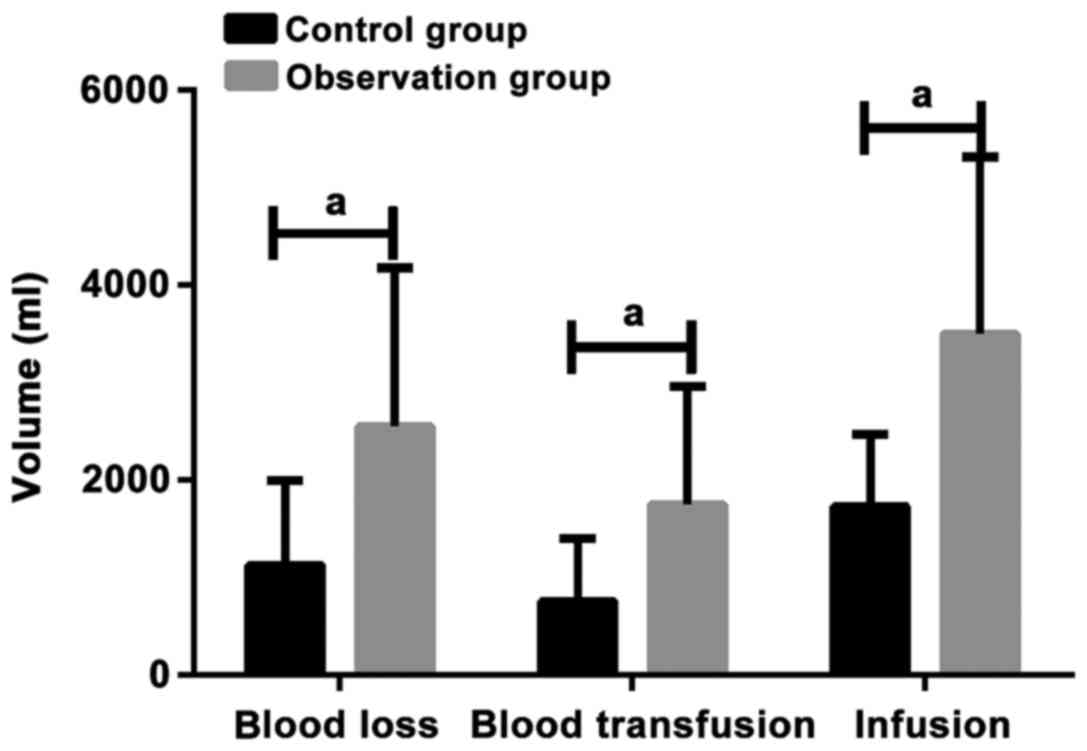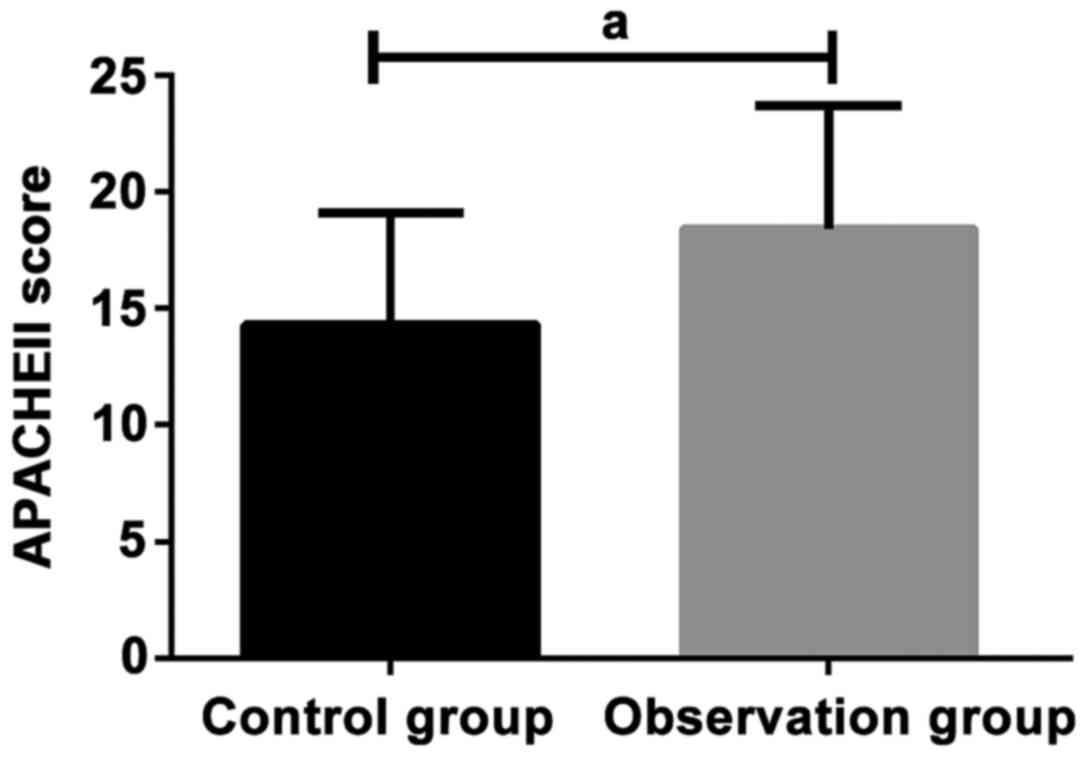|
1
|
Thompson BT, Chambers RC and Liu KD: Acute
respiratory distress syndrome. N Engl J Med. 377:562–572. 2017.
View Article : Google Scholar : PubMed/NCBI
|
|
2
|
Sweeney RM and McAuley DF: Acute
respiratory distress syndrome. Lancet. 388:2416–2430. 2016.
View Article : Google Scholar : PubMed/NCBI
|
|
3
|
Stevens JP, Law A and Giannakoulis J:
Acute respiratory distress syndrome. JAMA. 319:7322018. View Article : Google Scholar : PubMed/NCBI
|
|
4
|
Chang Y, Park SH, Huh J-W, Lim C-M, Koh Y
and Hong S-B: Intratracheal administration of umbilical cord
blood-derived mesenchymal stem cells in a patient with acute
respiratory distress syndrome. J Korean Med Sci. 29:438–440. 2014.
View Article : Google Scholar : PubMed/NCBI
|
|
5
|
Grissom CK, Hirshberg EL, Dickerson JB,
Brown SM, Lanspa MJ, Liu KD, Schoenfeld D, Tidswell M, Hite RD,
Rock P, et al: National Heart Lung and Blood Institute Acute
Respiratory Distress Syndrome Clinical Trials Network: Fluid
management with a simplified conservative protocol for the acute
respiratory distress syndrome. Crit Care Med. 43:288–295. 2015.
View Article : Google Scholar : PubMed/NCBI
|
|
6
|
Bellani G, Laffey JG, Pham T, Fan E,
Brochard L, Esteban A, Gattinoni L, van Haren F, Larsson A, McAuley
DF, et al: LUNG SAFE Investigators; ESICM Trials Group:
Epidemiology, patterns of care, and mortality for patients with
acute respiratory distress syndrome in intensive care units in 50
countries. JAMA. 315:788–800. 2016. View Article : Google Scholar : PubMed/NCBI
|
|
7
|
Amato MB, Meade MO, Slutsky AS, Brochard
L, Costa EL, Schoenfeld DA, Stewart TE, Briel M, Talmor D, Mercat
A, et al: Driving pressure and survival in the acute respiratory
distress syndrome. N Engl J Med. 372:747–755. 2015. View Article : Google Scholar : PubMed/NCBI
|
|
8
|
Pediatric Acute Lung Injury Consensus
Conference Group: Pediatric acute respiratory distress syndrome:
Consensus recommendations from the Pediatric Acute Lung Injury
Consensus Conference. Pediatr Crit Care Med. 16:428–439. 2015.
View Article : Google Scholar : PubMed/NCBI
|
|
9
|
Dizier S, Forel JM, Ayzac L, Richard JC,
Hraiech S, Lehingue S, Loundou A, Roch A, Guerin C and Papazian L:
ACURASYS study investigators; PROSEVA Study Group: Early hepatic
dysfunction is associated with a worse outcome in patients
presenting with acute respiratory distress syndrome: A post-hoc
analysis of the ACURASYS and PROSEVA Studies. PLoS One.
10:e01442782015. View Article : Google Scholar : PubMed/NCBI
|
|
10
|
Patel BK, Wolfe KS, Pohlman AS, Hall JB
and Kress JP: Effect of noninvasive ventilation delivered by helmet
vs face mask on the rate of endotracheal intubation in patients
with acute respiratory distress syndrome: A randomized clinical
trial. JAMA. 315:2435–2441. 2016. View Article : Google Scholar : PubMed/NCBI
|
|
11
|
Needham DM, Yang T, Dinglas VD,
Mendez-Tellez PA, Shanholtz C, Sevransky JE, Brower RG, Pronovost
PJ and Colantuoni E: Timing of low tidal volume ventilation and
intensive care unit mortality in acute respiratory distress
syndrome. A prospective cohort study. Am J Respir Crit Care Med.
191:177–185. 2015. View Article : Google Scholar : PubMed/NCBI
|
|
12
|
Villar J, Blanco J and Kacmarek RM:
Current incidence and outcome of the acute respiratory distress
syndrome. Curr Opin Crit Care. 22:1–6. 2016. View Article : Google Scholar : PubMed/NCBI
|
|
13
|
Neto AS, Simonis FD, Barbas CS, Biehl M,
Determann RM, Elmer J, Friedman G, Gajic O, Goldstein JN, Linko R,
et al: PROtective Ventilation Network Investigators:
Lung-protective ventilation with low tidal volumes and the
occurrence of pulmonary complications in patients without acute
respiratory distress syndrome: A systematic review and individual
patient data analysis. Crit Care Med. 43:2155–2163. 2015.
View Article : Google Scholar : PubMed/NCBI
|
|
14
|
Dessap Mekontso A, Boissier F, Charron C,
Bégot E, Repessé X, Legras A, Brun-Buisson C, Vignon P and
Vieillard-Baron A: Acute cor pulmonale during protective
ventilation for acute respiratory distress syndrome: Prevalence,
predictors, and clinical impact. Intensive Care Med. 42:862–870.
2016. View Article : Google Scholar : PubMed/NCBI
|
|
15
|
Cressoni M, Cadringher P, Chiurazzi C,
Amini M, Gallazzi E, Marino A, Brioni M, Carlesso E, Chiumello D,
Quintel M, et al: Lung inhomogeneity in patients with acute
respiratory distress syndrome. Am J Respir Crit Care Med.
189:149–158. 2014.PubMed/NCBI
|
|
16
|
Caironi P, Tognoni G, Masson S, Fumagalli
R, Pesenti A, Romero M, Fanizza C, Caspani L, Faenza S, Grasselli
G, et al: ALBIOS Study Investigators: Albumin replacement in
patients with severe sepsis or septic shock. N Engl J Med.
370:1412–1421. 2014. View Article : Google Scholar : PubMed/NCBI
|
|
17
|
Masson S, Caironi P, Fanizza C, Carrer S,
Caricato A, Fassini P, Vago T, Romero M, Tognoni G, Gattinoni L, et
al: Albumin Italian Outcome Sepsis Study Investigators: Sequential
N-terminal pro-B-type natriuretic peptide and high-sensitivity
cardiac troponin measurements during albumin replacement in
patients with severe sepsis or septic shock. Crit Care Med.
44:707–716. 2016.PubMed/NCBI
|
|
18
|
Tokgöz Y, Erdur B and Öztürk Y: HLA
subtypes and Helicobacter pylori infection in an infant with
celiac crisis. Turk J Gastroenterol. 24:74–76. 2013. View Article : Google Scholar : PubMed/NCBI
|
|
19
|
Horowitz M, Neeman E, Sharon E and
Ben-Eliyahu S: Exploiting the critical perioperative period to
improve long-term cancer outcomes. Nat Rev Clin Oncol. 12:213–226.
2015. View Article : Google Scholar : PubMed/NCBI
|
|
20
|
Ecker BL, Simmons KD, Zaheer S, Poe SL,
Bartlett EK, Drebin JA, Fraker DL, Kelz RR, Roses RE and Karakousis
GC: Blood transfusion in major abdominal surgery for malignant
tumors: A trend analysis using the National Surgical Quality
Improvement Program. JAMA Surg. 151:518–525. 2016. View Article : Google Scholar : PubMed/NCBI
|
|
21
|
Calfee CS, Delucchi K, Parsons PE,
Thompson BT, Ware LB and Matthay MA: NHLBI ARDS Network:
Subphenotypes in acute respiratory distress syndrome: Latent class
analysis of data from two randomised controlled trials. Lancet
Respir Med. 2:611–620. 2014. View Article : Google Scholar : PubMed/NCBI
|
|
22
|
Schmidt M, Stewart C, Bailey M,
Nieszkowska A, Kelly J, Murphy L, Pilcher D, Cooper DJ,
Scheinkestel C, Pellegrino V, et al: Mechanical ventilation
management during extracorporeal membrane oxygenation for acute
respiratory distress syndrome: A retrospective international
multicenter study. Crit Care Med. 43:654–664. 2015. View Article : Google Scholar : PubMed/NCBI
|
|
23
|
Wang Z, Wei Y, Tejera P, Su L, Bajwa EK
and Christiani DC: A functional missense SNP in LRRC16A contributes
to an improved prognosis of ARDS patients mediated through
attenuated platelet count decline in ICU. Am J Respir Crit Care
Med. 193:A74892016.
|
|
24
|
Hendrickson CM and Matthay MA: Endothelial
biomarkers in human sepsis: Pathogenesis and prognosis for ARDS.
Pulm Circ. 8:20458940187698762018. View Article : Google Scholar : PubMed/NCBI
|
|
25
|
Qi SY, Wang WT, Chu ZD, Chen CY, Zhou MK,
Ren YX and Liu XJ: The clinical analysis of extracorporeal membrane
oxygenation for adult severe acute respiratory distress syndrome.
Zhonghua Jie He He Hu Xi Za Zhi. 39:291–297. 2016.(In Chinese).
PubMed/NCBI
|
|
26
|
Zhu Q, Pan X, Cao Y, Wang H, Yu N, Liu F,
Yang S, Wang Y, Sun Y and Wang Z: Clinical evaluation of continuous
renal replacement therapy in combination with ultrasound-guided
percutaneous transhepatic gallbladder drainage for acute severe
biliary pancreatitis: A retrospective study. Kidney Blood Press
Res. 42:1023–1032. 2017. View Article : Google Scholar : PubMed/NCBI
|
















